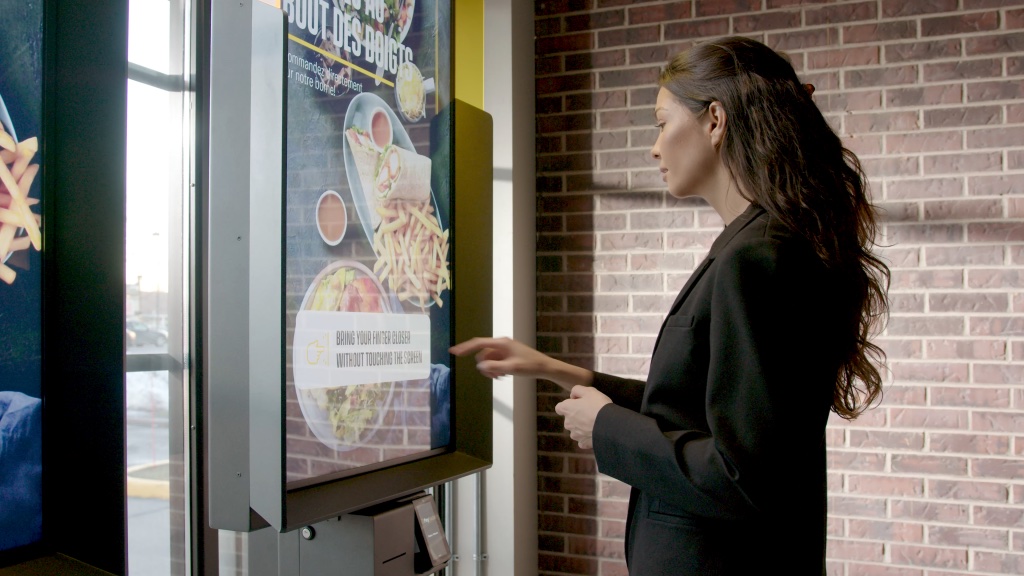
Quebec Restaurant Chain Starts Deploying Touchless Kiosk Screens
January 25, 2022 by Dave Haynes
The pandemic has triggered a lot of discussion about the merits of touchless technologies over physical touchscreens, but there’s not a lot of evidence that touchless is being adopted.
The core argument is around how touchless removes the health safety risk of physically touching a screen to do things like orders, payments and information look-ups.
Touchscreen business activity actually increased in the last two years, as companies saw self-service screens as a way to limit staff-to-customer contacts and also deal with staffing shortages or workforce reductions. But there are companies continuing to market solutions that provide a touch experience, without the physical contact. And there are buyers for it.
The Canadian, chicken-focused fast casual chain St-Hubert has worked with Samsung and the Luxembourg tech firm iNUI Studio to roll out service kiosks at locations in and around Montreal.
The AIRxTOUCH KIOSK Series 3 kiosk uses a Samsung QMR Series 55-inch panel, married with optical sensors that frame the interactive zones of the screen.
The touchless kiosk uses image-processing algorithms to capture and respond to mid-air interaction that are roughly 5 cm (a couple of inches) from the screen. Says the PR: “Allowing click, double-click, drag and drop, slide, and zoom interactions – all with a precision of 3 mm – AIR TOUCH is as easy to use as a conventional touch device.”
“It’s been rewarding to partner with Samsung Canada for the first implementation of our technology in North America,” says Olivier Raulot, Founder and CEO, iNUI Studio. “Thanks to Samsung’s display technology, we are able to build a new kiosk standard for quick-service restaurants. AIR TOUCH is as simple to use as traditional devices, but with the added benefit of promoting hygiene. By trusting us as well as our technology, St-Hubert is continuing to strengthen its leadership position in the market.”
“Today’s consumers expect self-service options everywhere they shop, including quick-service restaurants like St-Hubert,” says Mary Peterson, Vice President, IT & Enterprise Solutions, Samsung Electronics Canada. “Together, we are leveraging state-of-the-art technology to create a convenient and safe customer experience.”
Touchscreen vendors counter these touch-less technologies with a few assertions:
- First, consumers just squirt some sanitizer on their hands after using screens, just as they do after pulling door handles and using handrails;
- Second, anything that slows down the self-service process, ESPECIALLY processes involving ordering and payments in busy places, is a problem. For touchless to take hold, it has to be just as fast and snappy as touchscreens, accurate and needing no learning curve.
I’ve monkeyed with touchless tech at trade shows. It’s interesting, but I worry about the learning curve and assume a PILE of consumers will walk up to these screens and physically boink away at the actual display surface … and maybe wonder what’s going on if the interactions are triggered before they touch the screen.
Using the same user experience as physical touchscreens in important. I think if a self-service unit asks people to do gestures like swipes and pinches, there will be problems as people struggle to do the gestures properly, and worry about looking silly.
That said, I think there are good business applications for this sort of thing. Think of medical environments where hygiene is super-critical, and industrial environments that see people walking around with safety gloves on, or who have hands dirtied by grease and grime.
I also think this stuff is interesting in places like museums and exhibitions, where there isn’t the same worry about speed and throughput.
Product video below …



Leave a comment